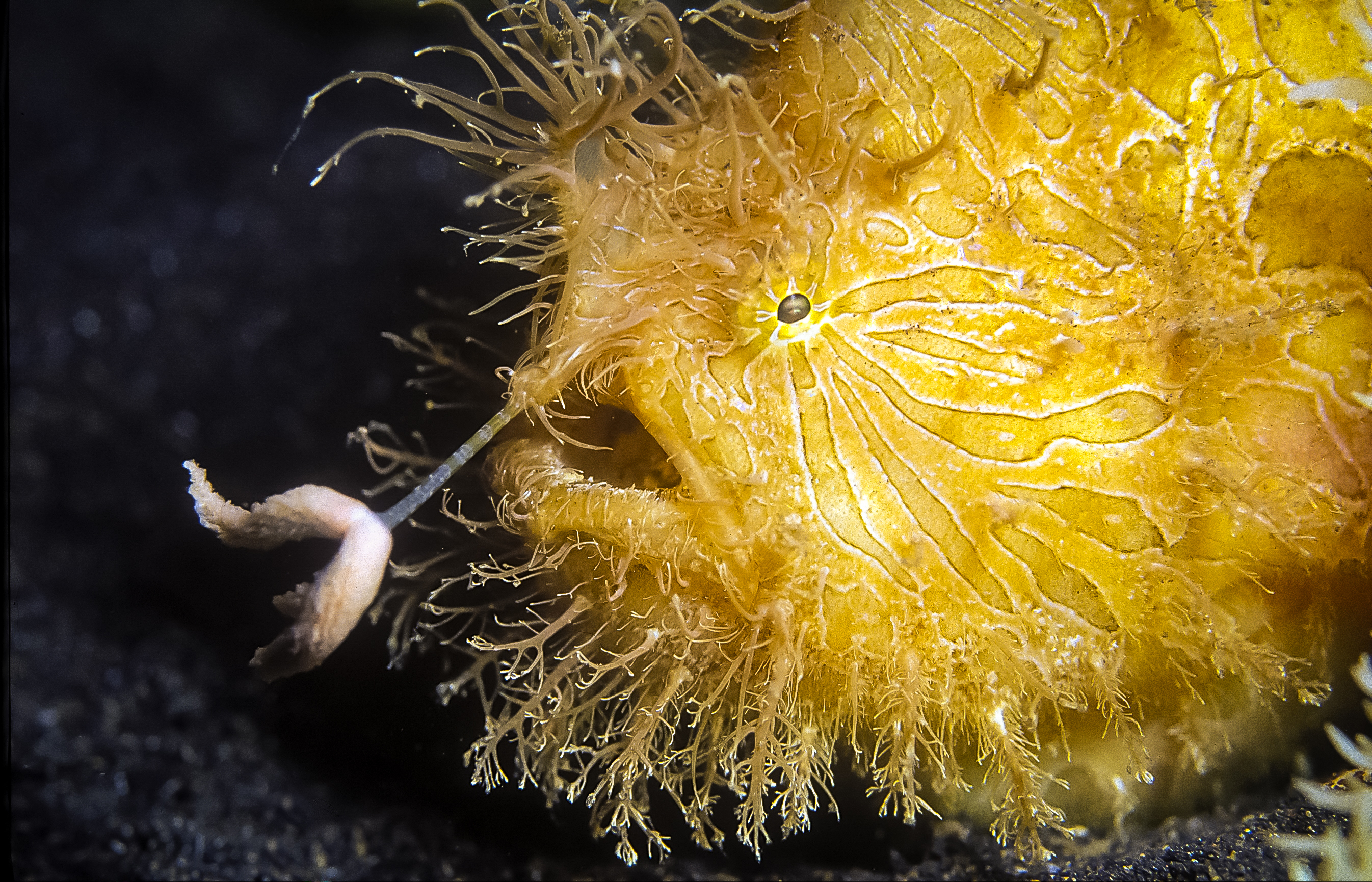The frogfish is an epic-looking sea creature that has a face only its mother could love. One of its most bizarre adaptations is the “fishing rod”-like appendage that sits on top of its head and helps lure prey into its gaping mouth. Previously, it was unknown how these “fishing rods” evolved or how the fish controlled the movement; now, scientists believe they have pinpointed it to a specialized population of neurons.
What is the “fishing rod”?
Frogfish have four dorsal fins, the first of which is the “fishing rod” located on top of the head – it is also called the illicium. It forms a long shaft (stop it), on top of which can be found the lure – also known as the esca – which resembles tiny fish, sandworms, and other potential prey.

Frogfish with the mighty fishing rod.
Image credit: Jack FotoVerse/Shutterstock.com
To catch their prey, the frogfish shake their rod and lure. The unsuspecting prey gets attracted and when close enough the frogfish opens its gaping mouth to swallow down the morsel in one gulp.
How does it move?
Researchers at Nagoya University discovered a unique motor neuron population that is responsible for the unusual dorsal fin’s movement, specifically in the striated frogfish (Antennarius striatus).
The team’s investigation into the illicium revealed that the muscle that controls its movement is connected to branches of the occipital nerve. The nerve cells (also known as motor neurons) are located in a special area that is found near the top of the spinal cord. The way these motor neurons were grouped was different from other motor neurons found in the frogfish.
What’s even more fascinating is how these neurons are structured. The branches of the neurons’ dendrites – responsible for receiving signals – are organized in a way that the researchers suggest reflects their specialized role in the frogfish’s hunting behavior, and evolved to be segregated away from the motor neurons controlling the other dorsal fins.
“This is an extremely rare case in which motor neurons for the illicium were originally dorsal fin motor neurons, but their location was shifted to serve a role completely different from their original function,” said study lead Professor Naoyuki Yamamoto in a statement.
Comparison with other species
To analyze this interesting appendage, the scientists compared the motor neurons in the frogfish to white-spotted pygmy filefish, a fish that uses the dorsal fin for intimidation rather than fishing. Tracer injections were used to locate the motor neurons in the spinal cord and study the differences in motor neuron positioning.
In the frogfish, the motor neurons for the “fishing rod” are found in a distinct area of the spinal cord, situated between the pectoral fins and other dorsal fins. In contrast, the pygmy filefish’s dorsal fin motor neurons are located in a more typical position.
“This comparison with other species suggests that motor neurons migrated during the evolution of their function,” said Yamamoto.
These findings provide a rare example of functional evolution in the vertebrate nervous system. The research might also come with implications for other elements of vertebrate evolution.
“While we, as land animals, do not have fins, our forelimbs and hindlimbs are similar to the pectoral and ventral fins in the light of their distribution in the spinal ventral horn, and our ancestors also once had dorsal fins,” explained Yamamoto. “The organization of different groups of motor neuron groups is similar among vertebrates. In vertebrates, there are several species with highly specialized behavior.”
“Our study provides a new point of view on motor neurons, and we hope it prompts similar studies in other species that lead scientists to understand the rules that govern their organization.”
The study is published in The Journal of Comparative Neurology.
H/T: ArsTechnica
Source Link: Mystery Behind Movement Of Frogfish’s “Fishing Rod” Has Finally Been Solved